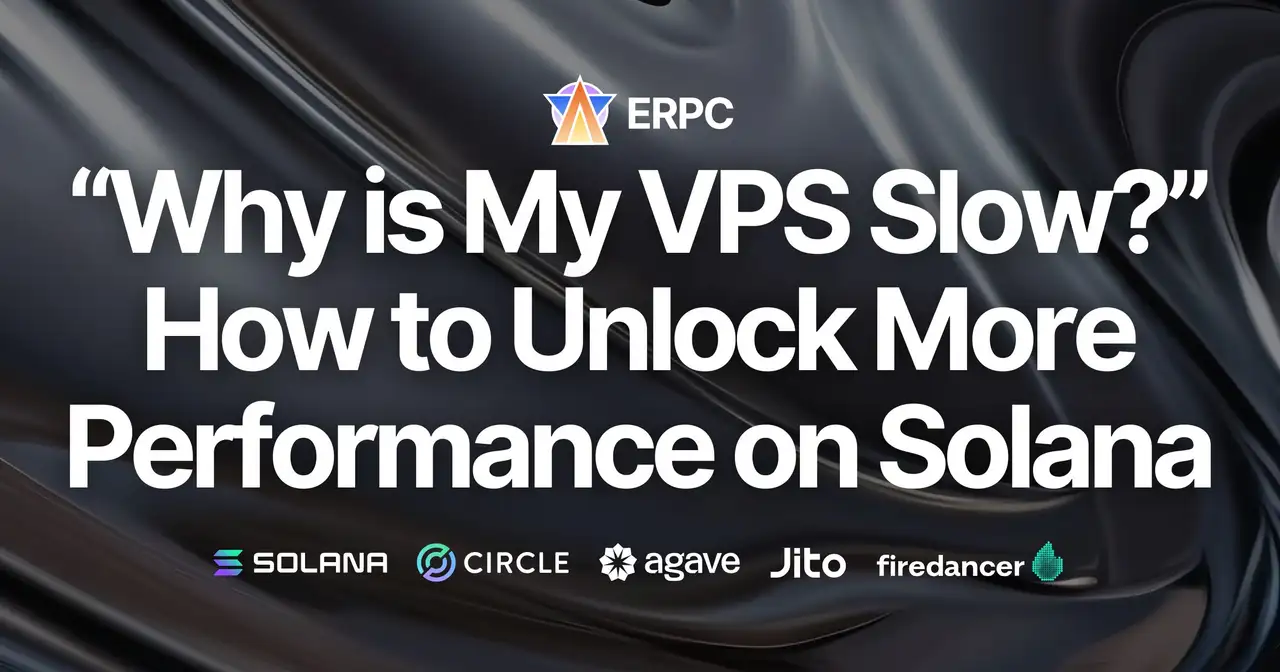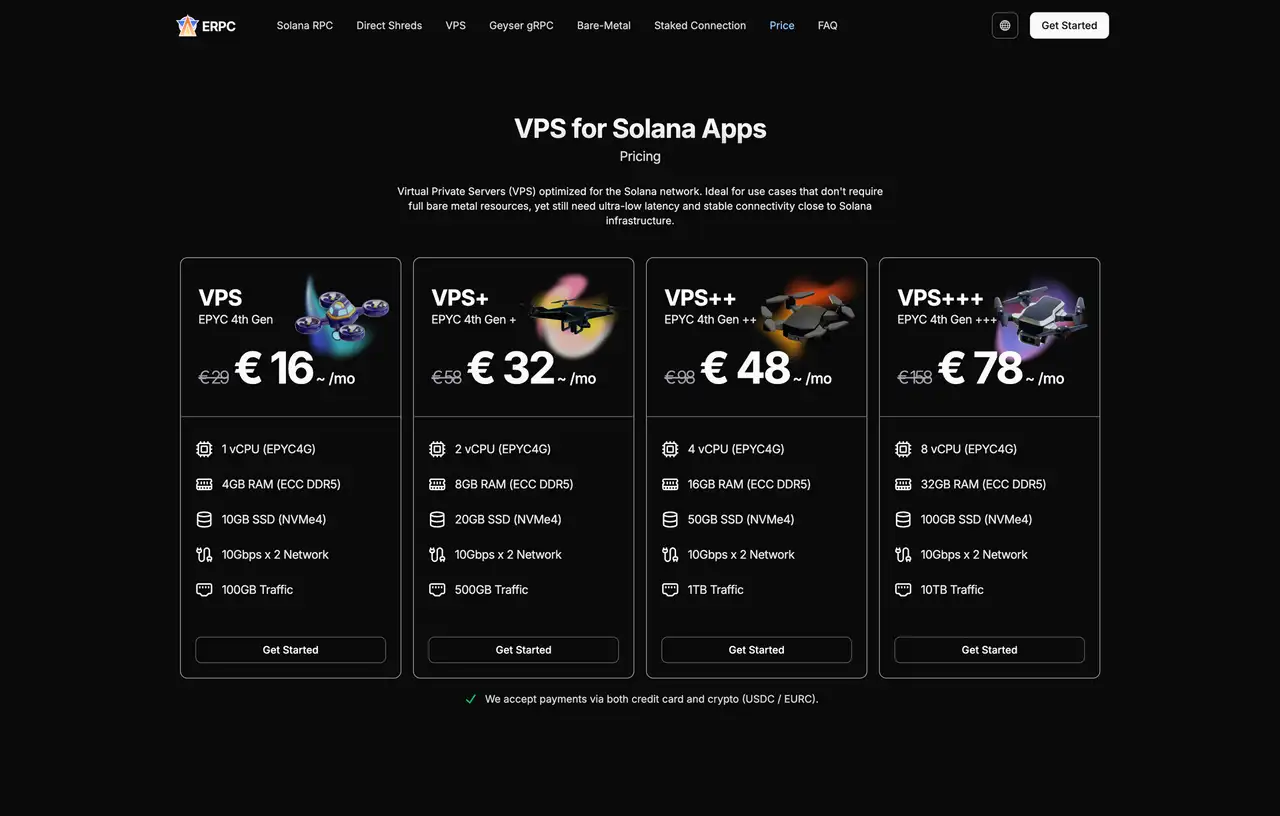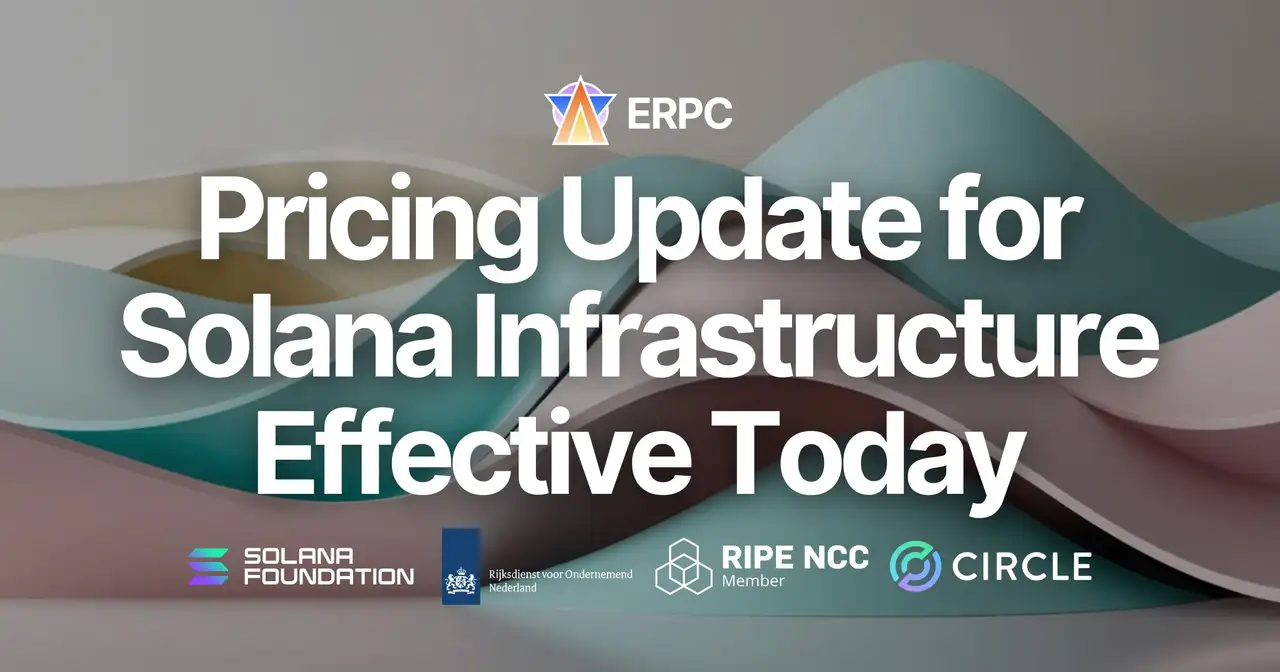”Why is My VPS Slow?” How to Unlock More Performance on Solana
”Why is My VPS Slow?” How to Unlock More Performance on Solana

At ERPC, we are fortunate to welcome numerous new users every day, receiving a wide range of technical inquiries as traders and projects scale, resulting in increasingly demanding application requirements.
Though we ourselves are developers rather than traders, the nature of Solana RPC services means high-frequency traders frequently provide invaluable feedback that guides our development. Operating daily under intense conditions, these traders offer high-quality insights that significantly help us enhance our services. As a result, we've become providers of the fastest real-time data streaming products in the Solana ecosystem.
This article is aimed at those who are using a VPS but feel they're not achieving the desired performance. Here we outline the next steps to secure a genuinely high-performance environment.
Why Choosing a Bare-Metal Server Is Essential for Maximum Speed
First, if your goal is absolute speed without regard to cost, selecting a VPS is fundamentally incorrect. To achieve the highest performance possible, a bare-metal server is essential. Let's explore the technical reasons behind this.
VPS is a Virtual Machine
The "V" in VPS stands for "Virtual." A virtual server divides one physical server into multiple virtual instances. For example, a physical server can be split into 100 VPS instances. In simplistic terms, each VPS could have roughly 1/100 of the power of the original server. Network cables are also shared among these virtual servers, potentially leading to performance degradation during peak periods (though the reality is somewhat more complex, as explained below).
Modern data-center CPUs are designed to minimize performance loss due to virtualization, but there remain inherent physical limitations.
The Concept of Overcommitment
VPS providers often allocate resources beyond the actual physical CPU cores and RAM available—a practice known as "overcommitment."
For example, a CPU with 64 cores and 128 threads might appear capable of supporting 64 VPS instances with 2 vCPUs each. However, in reality, providers may offer 512 or more 2-vCPU instances on such hardware. You may wonder, "How can 512 VPS instances be created when only 64 physical cores exist?" The reason is that VPS instances rarely experience simultaneous peak loads, allowing providers to rely on this variability.
The level of overcommitment greatly impacts performance, and some cloud providers regularly employ overcommitment ratios of eight times or more.
Additionally, network resources are typically limited. Thousands of virtual machines may share just a few physical network cables. This leads to difficulties in ensuring stable bandwidth and requires additional resources for load balancing, ultimately introducing significant latency.
At ERPC, we significantly limit overcommitment to mitigate these performance issues.
Quality of CPUs, RAM, and SSDs Used
VPS services generally prioritize cost-performance ratios rather than pure performance. As a result, the latest-generation CPUs, RAM, and SSDs are rarely utilized.
However, ERPC recognizes that our customers prioritize performance above all else. Therefore, while maintaining balanced costs, we proactively adopt the latest-generation, high-quality CPUs, RAM, and SSDs. Achieving comparable performance through typical cloud services would cost around five times more, and due to inherent limitations, those services still may not deliver equivalent performance.
RAID Configuration and Performance Impact
Most servers use RAID configurations to prevent data loss by distributing data across multiple disks. However, this setup comes at the expense of performance.
In blockchain applications, particularly with Solana, data is publicly available, and important data is duplicated across multiple nodes due to the decentralized system structure. Therefore, prioritizing performance over data redundancy ("No RAID") is often recommended. Indeed, Solana's official validator requirements suggest No RAID setups, with RAID configurations frequently reported as causing performance issues.
At ERPC, we generally recommend No RAID for performance-oriented clients. However, RAID configurations can also be provided for dedicated node plans based on specific customer requirements. Please feel free to discuss your needs with us.
Proximity to Solana Nodes
Typical VPS and cloud providers do not offer Solana RPC endpoints, meaning that data must always travel through external internet routes. Consequently, latency depends heavily on physical distance and network conditions.
ERPC manages all infrastructure within our own network. Communication between dedicated VPS and dedicated Solana endpoints doesn't require external internet routing. This setup enables near-zero internal communication latency, achieving ping values as low as approximately 0.1ms.
Network Limits and Costs
Many VPS and cloud providers impose network bandwidth limits, leading to potentially high charges for extensive data usage. Our extensive experience working with major public cloud providers has given us deep insights into these performance and pricing challenges.
ERPC's infrastructure is specifically designed to handle the significant network demands of Solana validators—approximately 150TB per node per month. Leveraging this experience, we've developed a proprietary, high-performance VPS platform.
We confidently offer exceptional performance within our pricing tier. Orders are accepted through the Validators DAO official Discord.

We remain committed to continuously developing innovative platforms. Thank you for your ongoing support.
- Validators DAO Official Discord: https://discord.gg/C7ZQSrCkYR




